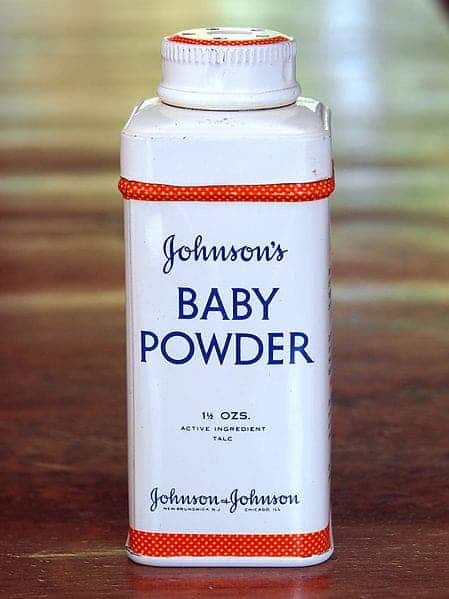In 2018, a court verdict ordered Johnson and Johnson to pay $2.1 billion to 22 plaintiffs who claimed the company’s talcum baby powder contained asbestos and caused ovarian cancer. It’s a hefty fine, but the stakes are even higher — as the company faces around 21,000 other trials.

The story (or at least one part of it) starts in 1999, when J&J was sued by a woman who had used their baby powder. She claimed that the powder gave her cancer. The woman (and her lawyer) had a hunch that the company’s baby powder was contaminated with asbestos, but couldn’t prove it. It seemed to make sense: in nature, talc and asbestos (both naturally-occurring minerals) are often found together, so there’s a significant risk of contamination.
But without hard evidence, the case was dropped. As it turns out, Johnson and Johnson had the hard evidence all along.
The company, which denied any wrongdoing, had numerous lab tests showing that their product sometimes contained small amounts of asbestos, a known carcinogen. Two decades later, they were ordered to release these lab tests during a much larger trial that involved 11,700 plaintiffs, who all claimed the same thing: Johnson and Johnson’s baby powder sometimes contains asbestos.
According to a Reuters investigation, J&J knew they were in the wrong, and hid it from both the public and regulators. In light of these findings, a Missouri jury initially awarded the women $4.7 billion — but an appeal dropped two women from the suit and reduced the award to $2 billion. The judge in that case ruled that the company had “misrepresented the safety of these products for decades” and demonstrated “particularly reprehensible conduct.”
J&J tried to push things even further. The case initially combined the claims of almost two dozen plaintiffs from 12 states. The company argued to the Supreme Court that the sprawling nature of the case violated the Constitution’s due process clause. But without comment, the top US court refused to consider J&J’s objections.
“Today justice is served,” said Mark Lanier, the women’s lawyer. “Twenty families now get compensated for a horrible, unnecessary disease. And J&J, the trigger for that disease, is held accountable.” Jurors in the initial case awarded each woman $25 million in compensatory damages, in addition to the company fine.
For J&J, this could be only the beginning. The company faces more than 26,000 lawsuits blaming baby powder for causing cancers — which could be the biggest litigation lawsuit in history. If even a fraction of these cases succeed, it could cost J&J in the trillions.
J&J pulled the product off U.S. and Canadian shelves last year, replacing it with its less-popular cornstarch-based baby powder. However, the product is still sold in other countries.
Notably, two justices (Samuel Alito and Brett Kavanaugh) took no part in the decision. Alito owns stocks in Johnson and Johnson, while Kavanaugh’s father headed an association that lobbied against labeling talc as a carcinogen.






